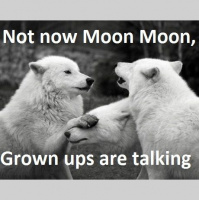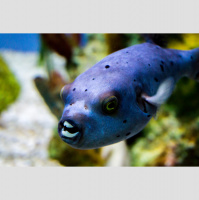Synopsis
A group of fresh faced scientists have biweekly informal discussions about evolutionary biology and palaeontology... over beer.
Episodes
-
Podcast 73 - Sincere Apologies to All Ammonite Workers
13/12/2015 Duration: 01h18minIn this episode, we discuss two papers that describe ammonite feeding habits. Meanwhile, Amanda gets into a boxing match, Curt is introduced to Moon Moon, and James is completely derailed by an animal.... again. Also, James invents a completely ridiculous life strategy for ammonites (34 :30) that Curt is just drunk enough to truly appreciate. Simple text summary The groups looks at two papers to find out what old animals with many arms and a hard house that they moved about the water in ate. The first paper studies old animals that have been looked at with a computer to see inside them and look at their teeth. The study shows that some of these many armed house carrying animals ate tiny animals that fill the water. The other paper looks at the mouths of other types of animals with arms that carry houses on them and finds that they are very different. This paper shows that several different types of animals with arms that cary houses ate different things, and that the oldest type of eating is still seen tod
-
Podcast 72 - Converging on a Topic
29/11/2015 Duration: 01h13minFresh off of GSA, the gang gets together to discuss a quick paper about the extent to which adaptation can overprint historical signal in evolution. Afterwards, James and Curt update Amanda with the highlights of GSA. Meanwhile, Curt explains quarter based economics, James hosts a quiz show, and Amanda is delighted by a paper. "Your Call" Kevin MacLeod (incompetech.com) Licensed under Creative Commons: By Attribution 3.0http://creativecommons.org/licenses/by/3.0/ References: Ord, Terry J., and Thomas C. Summers. "Repeated evolution and the impact of evolutionary history on adaptation." BMC evolutionary biology 15.1 (2015): 137.
-
Podcast 71 - GSA 2015
15/11/2015 Duration: 03h08minIt's that time of year again, so James and Curt bring you day by day coverage of the 2015 Geological Society of America meeting, joined by friends Brendan Anderson and Tory McCoy. So join us for an ethically compromised good time as they discuss the fascinating work of strangers, friends, and themselves. Day 1: James and Curtis Day 2: James, Curtis, and Brendan starts at 0:50.40 Day 3: James, Curtis, Brendan, and Tory starts at 2:03.22.
-
Podcast 70 - Systems Breaking Down; The End of the Ediacaran
01/11/2015 Duration: 01h46minThe gang discusses two papers that deal with the events that led to the extinction of the early metazoan Ediacaran fauna, as well as the extinction's philosophical ramifications for our understanding of evolution in general. Chaos runs rampant throughout this podcast as our figurative and literal systems break down through time. But somehow, life.... finds a way.... through a 4G network. Meanwhile, Amanda jumps the gun, Curt makes jokes no one can understand, James "wins" again, and everyone slowly succumbs to chaos and madness. If you're just joining us for the first time, I'm so very... very sorry. References: Darroch, Simon AF, et al. "Biotic replacement and mass extinction of the Ediacara biota." Proc. R. Soc. B. Vol. 282. No. 1814. The Royal Society, 2015. Erwin, Douglas H. "Was the Ediacaran–Cambrian radiation a unique evolutionary event?." Paleobiology 41.01 (2015): 1-15.
-
Podcast 69 - Tasty Kosher Food
18/10/2015 Duration: 01h18minThe gang finally just does what comes naturally and discusses two papers about food. Specifically, one paper on why things aren't tasty and another answering the vital question "what foods in the past would be kosher" (the answer might just surprise you). Meanwhile, Amanda finds her spirit animal, James details our terrifying corporate future, and Curt wants to play a game. TRIGGER WARNING: Mild joking reference to sexual-violence and mascots in the first two minutes. TRIGGER WARNING: We talk about eating meat throughout. Up-goer five simple-speak text: The group talks about two papers that look at food and which animals make good food. The first paper looks at the babies of small animals that have pretty things that let them fly. They find out that the babies that ate things with leaves that made bad food also made bad food themselves and would be ignored by other small animals that tried to eat them. The other paper works out whether animals in the past would have been good food for people that have very f
-
Podcast 68 - Plonts
04/10/2015 Duration: 01h28minThe gang discusses two papers about the evolutionary placement of some Cretaceous flowering plants (angiosperms). Meanwhile, Amanda finds her alter ego, James goes very old school with his jokes, and Curt really doesn't want to talk about the next paper. References Friis, Else Marie, et al. "Archaefructus–angiosperm precursor or specialized early angiosperm?." Trends in plant science 8.8 (2003): 369-373. Gomez, Bernard, et al. "Montsechia, an ancient aquatic angiosperm."Proceedings of the National Academy of Sciences 112.35 (2015): 10985-10988.
-
Podcast 67 - Stratigraphic Bias
20/09/2015 Duration: 01h35minThe gang discusses two papers that detail how the stratigraphic record affects our understanding of the fossil record. Meanwhile, Amanda gets very enthusiastic, James burns straw men, and Curt isn't sorry. References Benton, Michael J. "Palaeodiversity and formation counts: redundancy or bias?." Palaeontology (2015). Holland, Steven M., and Mark E. Patzkowsky. "The stratigraphy of mass extinction." Palaeontology (2015).
-
Podcast 66 - Penguin Death Land
06/09/2015 Duration: 01h14minIn this episode the gang tries to have a discussion about the fossil preservation of birds. Instead they get completely sidetracked imagining the penguin apocalypse. Meanwhile, Amanda slowly goes crazy, James keeps hearing things, and Curt delights in a mispronunciation. "Up goer five" text summary This time the group looks at papers about how animals that have bits that mean they can fly break down when they are dead. The first paper looks at what happens to animals that have bits that mean they can fly when their bodies are left in bad water. These studies are used to see how long animals that could fly were dead before they were covered by stuff in old places where lots of dead things are found in the same place. The study shows that there are fewer types of animals that could fly in these old places where lots of dead things are found in the same place than we would expect. The second paper uses a computer to find out whether we should expect to find all the types of animals that could fly in these old
-
Podcast 65 - SEX!
23/08/2015 Duration: 01h23minThe gang goes broad and tackles two papers that deal with evidence of sex and reproduction in the fossil record. Meanwhile, Amanda goes method, James invents a new scientific term, and Curt is haunted by one terrible joke that will not die. "Hyperfun" Kevin MacLeod (incompetech.com) Licensed under Creative Commons: By Attribution 3.0http://creativecommons.org/licenses/by/3.0/ "Up goer five" text summary Today the group talks about fucking. Yes, fuck is one of the ten hundred most used words, while better and less bad words for fucking are not. You think what that means about people. Just think about it. The first paper is looking at the oldest pictures of stuff that comes out of a man after he has had a fuck. This fuck water is from a small animal with no hard parts and so we usually do not know that the animal was there. However, the fuck water is different for different types of small animal, and so we can see what small animals with no hard parts were there without seeing the actual animals. The fuck water
-
Podcast 64 - Walk Before You Crawl; Convergence in Dinosaur Gait
09/08/2015 Duration: 01h03minThe gang discusses two papers about the evolution of quadrupedal lifestyle in ornithischian dinosaurs. Also, James discusses the joys of being a squid, Curt details the ideal political tag-team match, and Amanda dreams of HD belts. "Up goer five" text summary The group talks about big angry animals without hair - again. This time they look at two studies that look at how one group of big angry animals with no hair went from walking on two feet to walking on four. Three different bands of friends in the group have gone back to walking on four feet by themselves. The first paper looks at figuring out the soft parts to work out how they walked and finds that each of these three types of big angry animals without hair walk in different ways, even though they all walk on four feet. The second paper looks at why these three types of animal have gone back to walking on four feet by seeing where they got big and whether it would make them fall forwards or back. This was studied by sticking heavy bits of animals with
-
Podcast 63 - Meaty; The Evolution of Hypercarnivory
26/07/2015 Duration: 01h32minThe gang discusses two papers about the evolution (and loss) of hypercarnivory in mammals. Meanwhile, Amanda shares more equine history, Curt does his best to kill a trend, and James goes "nuclear". Please bear with us.... BEAR. "Batty McFaddin" Kevin MacLeod (incompetech.com) Licensed under Creative Commons: By Attribution 3.0http://creativecommons.org/licenses/by/3.0/ References Van Valkenburgh, Blaire, Xiaoming Wang, and John Damuth. "Cope's rule, hypercarnivory, and extinction in North American canids." Science 306.5693 (2004): 101-104. Figueirido, B., et al. "Shape at the cross‐roads: homoplasy and history in the evolution of the carnivoran skull towards herbivory." Journal of evolutionary biology 23.12 (2010): 2579-2594.
-
Podcast 62 - Brachiopods and Bivalves; The Most Interesting and Amazing Lifeforms on the Planet
12/07/2015 Duration: 01h12minThe gang discusses two papers about the effects of the Permian Mass Extinction on the evolutionary and ecological patterns of brachiopods and bivalves. Also, Amanda finds her true calling, James indiscriminately throws shade, and Curt feels the pain of being the only person to vaguely remember what the papers were about. 'Up goer five' summary: The group talks about two types of animals with hard parts to hide in, one which is food and one which is not food. It used to be thought that the food animals were better than the not food animals, and that they had beaten them over a long time so that there were more of them today than the not food animal. The first paper shows that this is not true, and that both animals did as well as each other until they both had a very bad day, and that the food animal just got over this very bad day faster. The second paper is making sure that we have not got anything wrong by only looking at one way we can find both the food and not food animals. References: Gould, Stephen
-
Podcast 61 - Frills and Horns; Ceratopsian Convergence
28/06/2015 Duration: 01h25minThat gang discusses convergent evolution and potential sexual selection in the horns and frills of ceratopsian dinosaurs, which Amanda refers to as the "most American dinosaur". Also, Amanda defends a cause, James practices being a "tiger mom", and Curt drinks for two with disastrous but expected consequences. Up-Goer Five podcast summary (using only the ten hundred most commonly used English words): The group talks about big angry animals with no hair that have things coming out of their faces. There are two groups of big angry animals with no hair that have things coming out of their faces, one with tall things coming off of the neck with smaller things coming out of their faces and another with a short thing coming off of the neck and longer things coming out of their faces. Some studies have looked at what all these things on faces and necks are for, and hurt marks on the hard bits of bodies show that the things were used to fight so that a Mr big angry animal with no hair could find a Mrs big angry anima
-
Podcast 60 – Many Memorable Mesozoic Mammals
14/06/2015 Duration: 01h48minIn this episode, the gang discuss the diverse and ecologically abundant mammals of the Mesozoic. Meanwhile, Amanda gives dedicated fans an exclusive cat report, James learns something, and Curtis does his best Skeletor impression. However, the greatest question goes unanswered: what are Wombles? Up-Goer Five podcast summary (using only the ten hundred most commonly used English words):The group talks about two papers that look at warm blooded animals with hair from a very long time ago, during the time of the big angry animals that did not have hair. While it used to be thought that there were not many different kinds of warm blooded animals with hair a very long time ago, new studies show that there were lots of different kinds of warm blooded animals with hair a long time ago and that they did lots of different things even when there were still big angry animals that did not have hair. It is shown that they changed to do these many different things several different times, and that changes to do these diffe
-
Podcast 59 - Dulce et Decorum est Pro Patria Mori
31/05/2015 Duration: 01h17minAmanda thinks about a writing style. James takes on a big responsibility. Curt deflects. The nature of change is considered, but the conversation remains locked in stasis. References Gould, Steven J.. "Is a New and General Theory of Evolution Emerging?" Paleobiology, 6.1 (1980): 119-130. Hunt, Gene, Melanie J. Hopkins, and Scott Lidgard. "Simple versus complex models of trait evolution and stasis as a response to environmental change."Proceedings of the National Academy of Sciences 112.16 (2015): 4885-4890.
-
Podcast 58 - Hateful Stares; A Discussion on Biomass Trends Through Time
17/05/2015 Duration: 01h19minIn this episode, the gang discusses changes in biomass through time. They also spend a fair chunk of the podcast passing blame. Meanwhile, James is denied eating a bagel, Curt describes complex biodiversity patterns as “getting swole”, and Amanda apologizes repeatedly. They also try to answer the toughest question of all, would a eurypterid be tasty? References: Bambach, Richard K. "Seafood through time: changes in biomass, energetics, and productivity in the marine ecosystem." Paleobiology (1993): 372-397. Cardinale, Bradley J., et al. "Impacts of plant diversity on biomass production increase through time because of species complementarity." Proceedings of the National Academy of Sciences 104.46 (2007): 18123-18128.
-
Podcast 57 - Imperfect Wings, Conifers and Bat Dinos
03/05/2015 Duration: 01h58minIn this episode, the gang tries desperately to talk about a really interesting plant paper and fails miserably. Meanwhile, James stops caring, Amanda relishes in being right, and Curt really tries to keep this one together (he fails). Also, despite the podcast not being about it at all, James has to talk about the new gliding dinosaur. References: Stevenson, Robert A., Dennis Evangelista, and Cindy V. Looy. "When conifers took flight: a biomechanical evaluation of an imperfect evolutionary takeoff."Paleobiology 41.02 (2015): 205-225. Hughes, Martin, Sylvain Gerber, and Matthew Albion Wills. "Clades reach highest morphological disparity early in their evolution." Proceedings of the National Academy of Sciences 110.34 (2013): 13875-13879.
-
Podcast 56 - So the End Triassic Mass Extinction Event
19/04/2015 Duration: 01h49minThe gang attempts to discuss the Ringo Starr of mass extinctions, the End Triassic. And much like the actual extinction event, the discussion is long, broad, and not focused on any one thing in particular. Meanwhile, Amanda learns the joys of screen sharing, Curt makes some dubious shopping decisions, and James “wins” (play along at home and count how many times James “wins” the podcast). References Benton, Michael J. "More than one event in the late Triassic mass extinction."Nature 321.6073 (1986): 857-861. Tanner, L. H., S. G. Lucas, and M. G. Chapman. "Assessing the record and causes of Late Triassic extinctions." Earth-Science Reviews 65.1 (2004): 103-139. Kasprak, Alex H., et al. "Episodic photic zone euxinia in the northeastern Panthalassic Ocean during the end-Triassic extinction." Geology 43.4 (2015): 307-310.
-
Podcast 55 - Mouth Mimes Attack
05/04/2015 Duration: 01h35minIn this episode the gang discusses mimicry in the fossil record, which James uses as an excuse to introduce everyone to one of his “favorite” papers. And as they stare into the gaping maw of mimicry in slack-jawed disbelief, grim smiling lips float back to them flashing pearly teeth in the dark and whispering one word.... mouths. References http://www.edinburghgeolsoc.org/edingeologist/z_42_08.html Lamont, A. "Prolegomena to aggressive mimicry and protective resemblance in early fishes, chelicerates, trilobites and brachiopods." Scottish Journal of Science 1.2 (1969): 75-103. Topper, Timothy P., et al. "Competition and mimicry: the curious case of chaetae in brachiopods from the middle Cambrian Burgess Shale." BMC evolutionary biology 15.1 (2015): 42
-
Podcast 54 - Mind the Coral Gap
22/03/2015 Duration: 01h32minThe gang attempts to talk about the coral gap, but instead Amanda spends nearly 40 minutes trying to explain why Petoskey Stones are cool, and James tries to sidetrack her at every turn. Meanwhile, Curt is too drunk to care. Our sincerest apologies to all of the coral workers out there. References: Robinson, George W., and Donald Reed. "Pink Petoskey Stones from Northern Michigan." Rocks & Minerals 88.3 (2013): 244-249. Stanley, George D. "The evolution of modern corals and their early history."Earth-Science Reviews 60.3 (2003): 195-225. Stolarski, Jarosław, et al. "The ancient evolutionary origins of Scleractinia revealed by azooxanthellate corals." BMC evolutionary biology 11.1 (2011): 316.

































